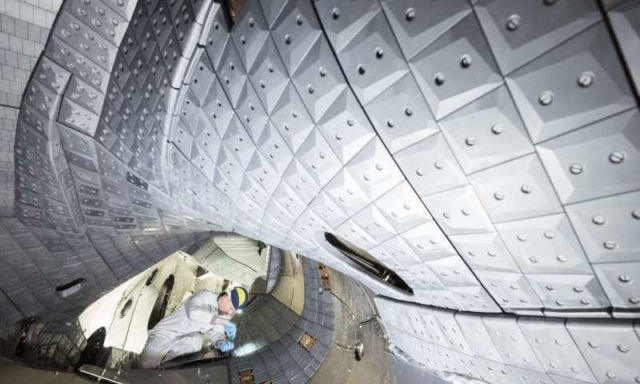Wendelstein 7-X achieved higher temperatures and densities of the plasma, a new world record for fusion product.
Wendelstein 7-X at Max Planck Institute for Plasma Physics (IPP) in Greifswald, the world’s largest fusion device of the stellarator type, covered its vessel walls now with graphite tiles, thus allowing higher temperatures and longer plasma discharges.
Above, view inside the plasma vessel with graphite tile cladding. Credit IPP, Jan Michael Hosan
With the so-called divertor it is also possible to control the purity and density of the plasma: The divertor tiles follow the twisted contour of the plasma edge in the form of ten broad strips along the wall of the plasma vessel. In this way, they protect particularly the wall areas onto which the particles escaping from the edge of the plasma ring are made to impinge. Along with impurities, the impinging particles are here neutralised and pumped off.
Professor Dr. Thomas Sunn Pedersen, said:
“First experience with the new wall elements are highly positive.”
Plasmas lasting up to 26 seconds are now being produced. A heating energy of up to 75 megajoules could be fed into the plasma, this being 18 times as much as in the first operation phase without divertor. The heating power could also be increased, this being a prerequisite to high plasma density.
source Max Planck Institute for Plasma Physics






Leave A Comment